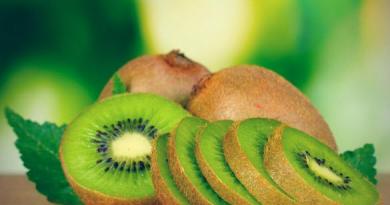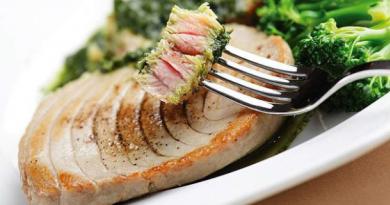Everyone knows that drink It is nothing more than a liquid meant to be drunk. The basis of most drinks consumed by humans is water. She herself is a drink and is used both in pure and in carbonated or mineralized form (both extracted from natural mineral sources, and with additions). Drinks are usually divided into three large groups - alcoholic drinks, carbonated drinks And soft drinks.
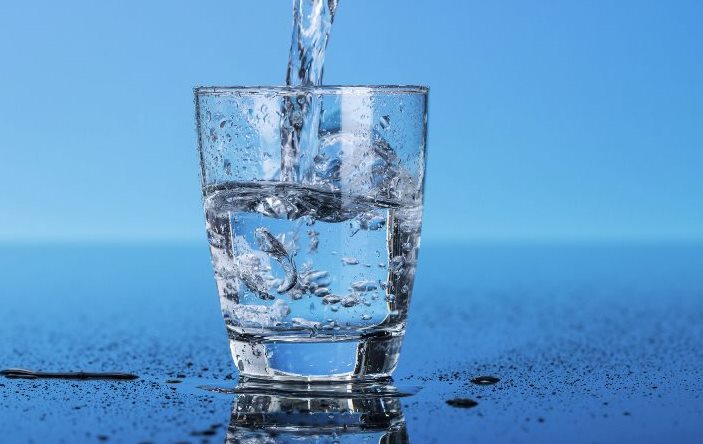
Alcoholic drinks called drinks containing at least 1.5% ethyl alcohol obtained from alcohol, carbohydrate-containing raw materials. Since ancient times, they have been prepared by fermentation (fermentation is the metabolic breakdown of nutrient molecules, such as glucose, that occurs without the participation of oxygen). Alcoholic drinks include:
Wine- an alcoholic beverage obtained by complete or partial alcoholic fermentation of grape juice.
Beer- a low-alcohol drink obtained by alcoholic fermentation of malt wort with the help of brewer's yeast, usually with the addition of hops.
Cider- a low-alcohol drink, usually champagne, obtained by fermenting apple, less often pear or other fruit juice without the addition of yeast.
mead- an alcoholic drink made from water, honey and yeast with various flavors.
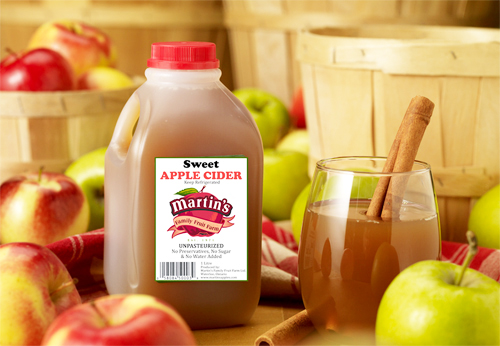
Cider
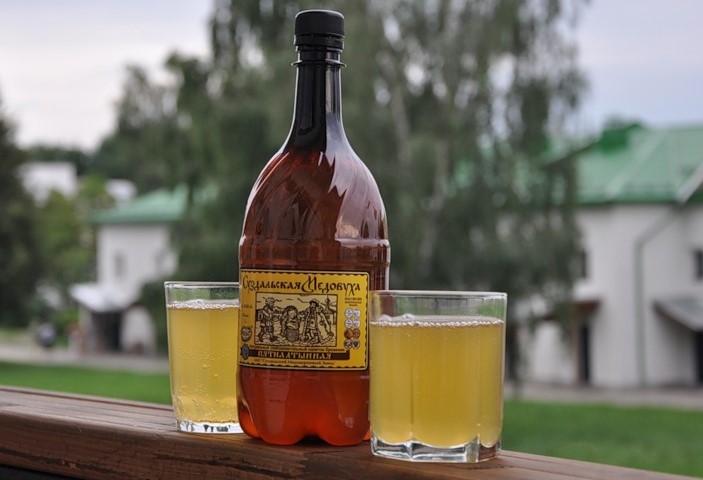
mead
Another large subgroup of alcoholic beverages is the so-called hard liquor. Strong liquor prepared using distillation apparatus, distillation column apparatus or other methods of increasing the strength without the involvement of microorganisms. Hard liquor includes:
Absinthe- an alcoholic drink, the most important component of which is an extract of bitter wormwood, the essential oils of which contain a large amount of thujone.
Brandy- an alcoholic beverage, a general term for products of the distillation of grape wine, fruit or berry mash.
Calvados- apple or pear brandy, obtained by distillation of cider, from the French region of Lower Normandy.
Whiskey is an aromatic alcoholic beverage obtained from various types of grains using the processes of malting, distillation and long-term aging in oak barrels.
Vodka- a colorless water-alcohol solution with a characteristic odor. The strength of vodka can be different: 40.0-45.0; 50.0 or 56.0% vol.
Grappa- Italian grape alcoholic drink. It is made by distillation of grapes after their pressing in the course of production of wine.
Gin- made by distilling wheat alcohol with the addition of juniper, which gives the gin its characteristic taste.
Cognac- Produced from certain grape varieties using a special technology.
Liquor- fragrant, usually sweet alcoholic drink from alcoholized fruit and berry juices, infusions of fragrant herbs with the addition of roots, spices.
Rum- made by fermentation and distillation from by-products of sugar cane production, such as molasses and cane syrup.
Moonshine- produced by distillation through home-made or factory-made apparatuses of an alcohol-containing mass (mash) obtained as a result of fermentation of sugar syrup, candied cereals, potatoes, beets, fruits or other products containing sugar and candied starch substances.
Tequila- made from the core of the blue agave (asparagus family), a plant traditional for Mexico, by distillation.

Absinthe
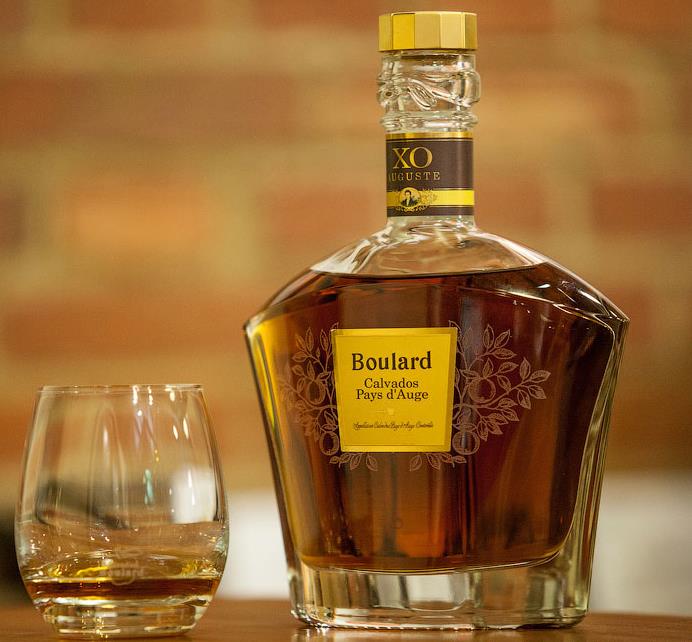
Calvados

Grappa

Rum from Jamaica
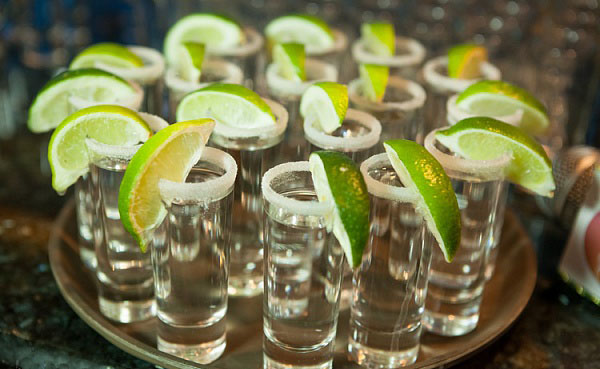
Tequila
The second large group of drinks - carbonated are carbonated beverages. They, in turn, are divided into two subgroups: fermented carbonated drinks
(for example, champagne or sour cabbage soup) and carbonated drinks obtained with modern technology
(cola, tonic, carbonated lemonade, sparkling water).
Champagne- sparkling wine produced in the French region of Champagne from established grape varieties by the method of secondary fermentation of wine in the bottle.
Sour shchi (sour shti)- an old Russian honey-malt highly carbonated soft drink. The main technological difference from kvass is the infusion of the original wort and after-fermentation in sealed bottles.
Drink cola A type of carbonated sugary drink often containing caffeine. The name comes from kola nuts, originally used by beverage manufacturers as a source of caffeine.
Tonic(from the English. tonic - tonic) - a bitter-sour non-alcoholic carbonated drink. Often used to dilute alcoholic beverages, especially gin, cocktails.
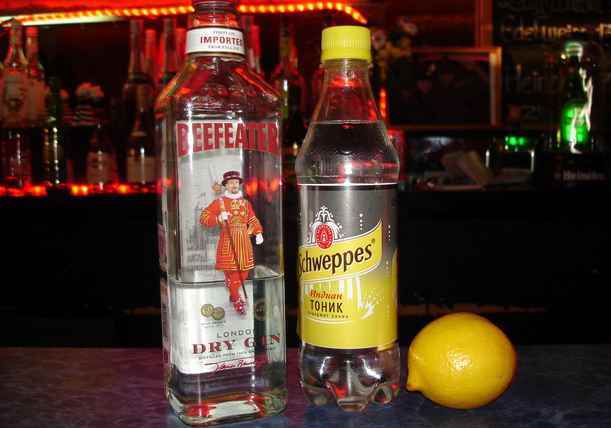
Tonic water is often used to dilute spirits, especially gin.
And finally, the third major group of drinks - the so-called soft drinks. Like carbonated drinks, they do not contain alcohol, but they also contain virtually no carbon dioxide. These drinks include:
Kvass- a traditional Slavic sour drink, which is prepared on the basis of fermentation from flour and malt (wheat, barley) or from dry rye bread, sometimes with the addition of fragrant herbs, honey, wax; also prepared from beets, fruits, berries.
Compote(fr. compote) - a dessert drink made from fruits or berries, or a decoction of fruits in syrup, as well as a mixture of dried fruits or dried berries and fruits, or fruit or berry preserves.
Morse- a non-carbonated soft drink traditional for Russian cuisine, which, as a rule, is prepared from wild northern berries, mainly lingonberries and cranberries.
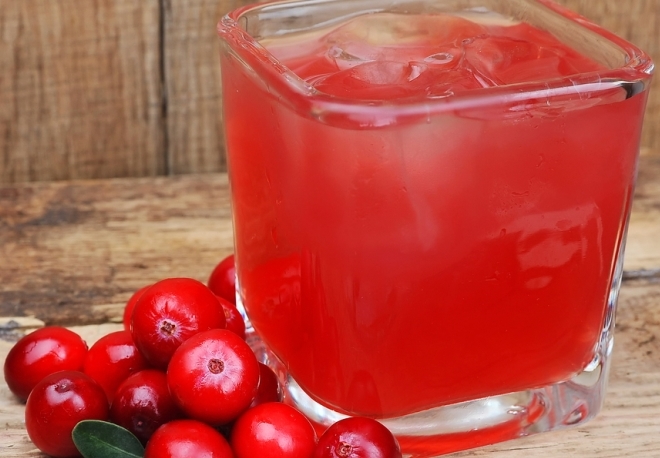
Cranberry juice
Also, non-alcoholic beverages include various juices from fruits, berries and vegetables, or drinks with their addition. Birch sap is also common in Russia.
A large subgroup of soft drinks are - milk drinks, i.e. drinks based on milk, mainly cow's:
Samo milk.
Kefir- a sour-milk drink obtained from whole or skimmed cow's milk by sour-milk and alcoholic fermentation using kefir "fungi" - a symbiosis of several types of microorganisms: lactic streptococci and bacilli, acetic acid bacteria and yeast (only about two dozen). Homogeneous, white in color, slight emission of carbon dioxide is possible.
Katyk- a fermented milk drink common among the Turkic peoples and in Bulgaria. It is produced from natural milk by fermenting it with special bacterial cultures. Katyk differs from all other types of curdled milk in that it is prepared from boiled milk, which provides a higher fat content.
Airan- a kind of Turkic fermented milk drink based on katyk or a kind of kefir among the Turkic, North Caucasian, South Caucasian and Balkan peoples. In different languages and among different peoples, the exact meaning of the name and the technology of preparation differ slightly, but the common thing is that it is a dairy product obtained with the help of lactic acid bacteria. At the same time, among sedentary peoples it is liquid and quenches thirst well, while among nomadic peoples it is thick like liquid sour cream, which is very convenient for storage and transportation. However, to quench your thirst, thick ayran requires dilution with water, milk or koumiss.

Fresh ayran (Istanbul, Turkey)
acidophilus- a fermented milk product that is made by fermenting pasteurized cow's milk with the help of special bacteria (acidophilus bacillus, kefir fungi, lactic streptococcus).
liquid yogurt. Yoghurt is a fermented milk product with a high content of skimmed milk substances, produced by fermentation with a protosymbiotic mixture of pure cultures - Bulgarian bacillus and thermophilic streptococcus. It is allowed to add food additives, fruits, vegetables and products of their processing
Ryazhenka- fermented milk drink obtained from baked cow's milk by lactic acid fermentation. Fermentation is carried out by thermophilic lactic streptococci and pure cultures of the Bulgarian stick, fermented for 3-6 hours. It has a yellowish-brownish tint and a traditional sour-milk taste. In fact, it is one of the varieties of yogurt without flavorings.

Ryazhenka
Of course, these are not all existing types of non-alcoholic milk drinks, but the most famous and common. In addition, it should be noted that although milk drinks are classified as non-alcoholic, there are also milk-based alcoholic drinks. This, for example, koumiss(prepared from mare's milk, may contain 5-6% alcohol or bilk(an alcoholic drink from the Abashiri brewery on the island of Hokkaido (Japan), which is a beer made from milk).
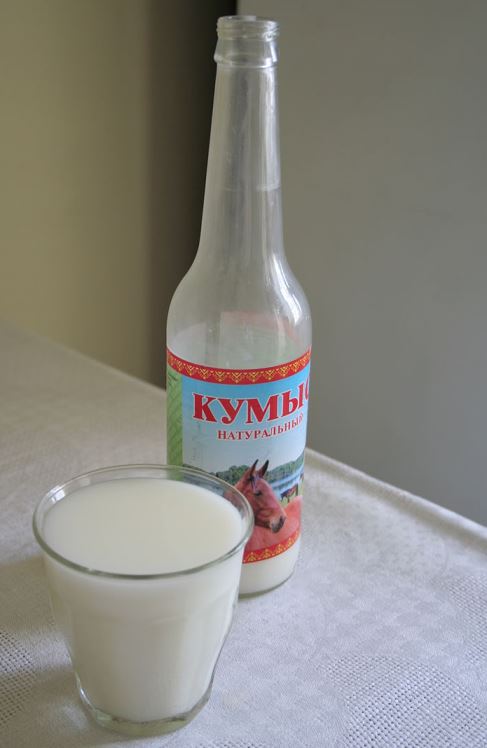
Kumys
Before that, we talked about drinks that are usually drunk chilled or at least not warmed up. But we all know hot drinks, which can be both non-alcoholic (most of them) and alcoholic. These include:
Cocoa- a drink, which necessarily includes cocoa (ground seeds of the cocoa plant (chocolate tree)), as well as milk (or water) and sugar. The drink is usually non-alcoholic. In the modern world, two main varieties of the drink are common: hot chocolate and regular cocoa, which is boiled in water or milk from cocoa powder.
Tea- a drink obtained by boiling, brewing and / or infusing a leaf of a tea bush, which is previously prepared in a special way.
Hibiscus- sweetish-sour-tasting tea drink of bright red or burgundy color, made from dried bracts of Sudanese rose flowers from the genus Hibiscus.
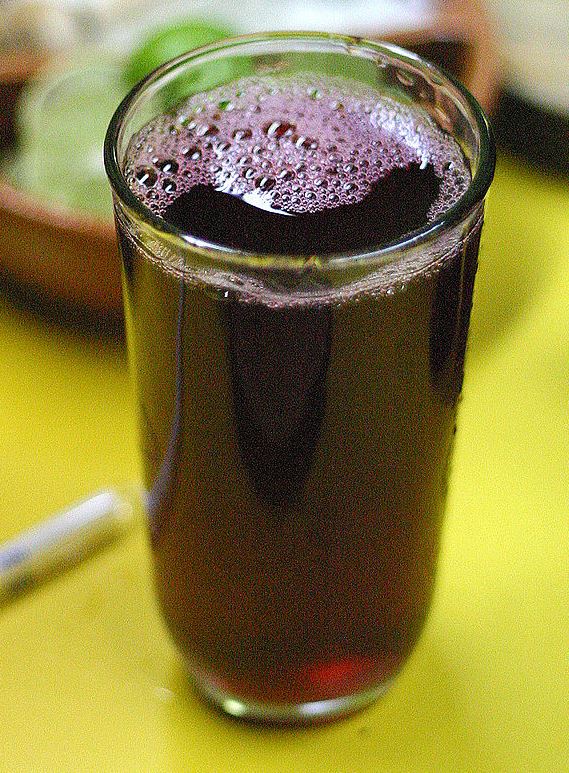
Hibiscus
Coffee- a drink made from roasted seeds (grains) of several plant species belonging to the genus Coffee (Coffea) of the Rubiaceae family.
Mate- a tonic drink with a high content of mateine, prepared from the dried crushed leaves and young shoots of the Paraguayan holly. An integral part of the culture of Argentina and a number of neighboring countries of South America.
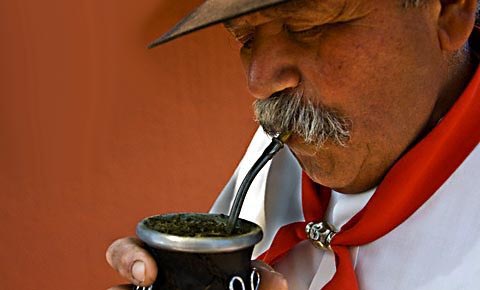
This is how it is customary to drink the brewed mate drink.
Mulled wine- a hot alcoholic drink based on red wine heated to 70-80 degrees with sugar and spices (spices). Traditionally consumed in Austria, Germany, Switzerland and the Czech Republic at Christmas markets and outdoor festivals.
Sbiten- an old East Slavic drink made from water, honey and spices, which often included medicinal herbal preparations. Hot sbiten has a warming and anti-inflammatory effect, so they drank it mainly in the winter. True, cold sbiten was no less popular drink when quenching thirst in a bathhouse or on a hot day in summer.
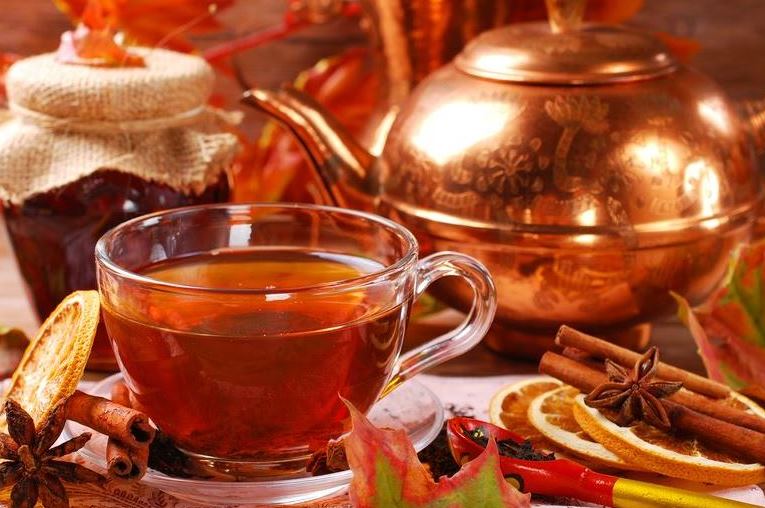
Sbiten - an old East Slavic drink made from water, honey and spices, which often included medicinal herbal preparations
Hot decoctions- liquid dosage form, which is an aqueous extract from medicinal plant materials by boiling in water and infusion. Have a similar property and infusions without boiling in water.

Decoction of St. John's wort


